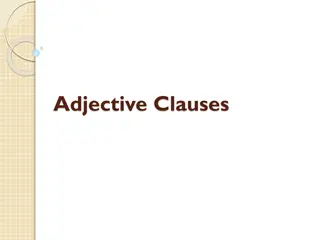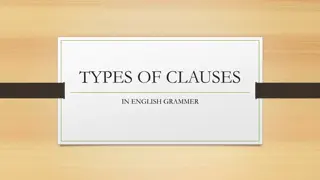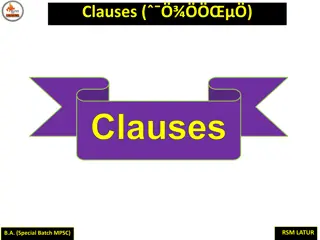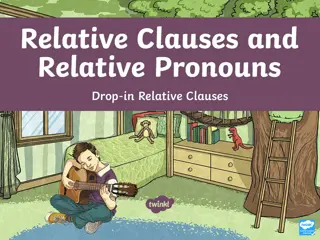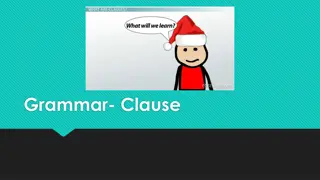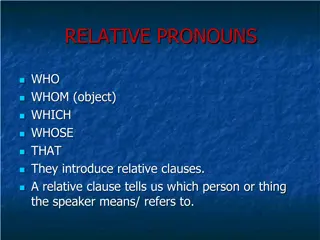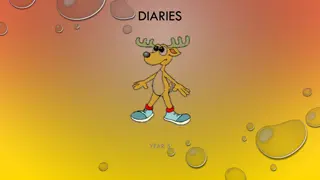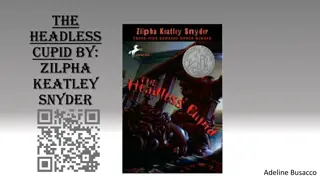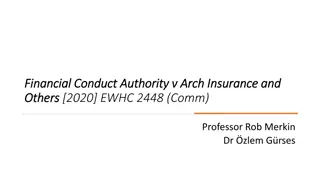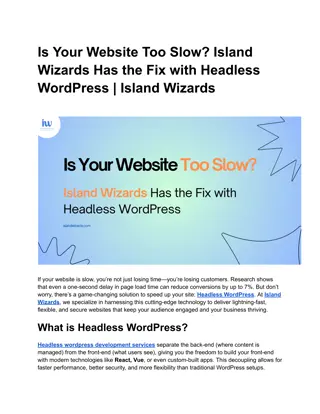Headless vs. Headed Relative Clauses in Latin: A Comparative Study
This study delves into the complexities of headless and headed relative clauses in Latin, exploring their syntax, semantics, and functions. Through analyzing examples from ancient texts, the research sheds light on the distinct characteristics and uses of these structures in the evolution of Latin grammar.
Download Presentation

Please find below an Image/Link to download the presentation.
The content on the website is provided AS IS for your information and personal use only. It may not be sold, licensed, or shared on other websites without obtaining consent from the author.If you encounter any issues during the download, it is possible that the publisher has removed the file from their server.
You are allowed to download the files provided on this website for personal or commercial use, subject to the condition that they are used lawfully. All files are the property of their respective owners.
The content on the website is provided AS IS for your information and personal use only. It may not be sold, licensed, or shared on other websites without obtaining consent from the author.
E N D
Presentation Transcript
Quid est qui ? Colloque sur la phrase relative, du proto-italique au proto-roman Qui or is qui? On free and semi-free relative clauses in Latin Anna Pompei Universit degli Studi Roma Tre anna.pompei@uniroma3.it
SUBJECT Headless relative clauses Headless vs. headed RCs Free and semi-free headless RCs Semantics of headed and headless RCs Three types of headless RCs and different functions of the phoric elements in each of them
HEADLESS RELATIVE CLAUSES Relative clauses that do not have a lexical head. Arelative clause is subordinated. A relative clause is connected to surrounding material by a pivot constituent. de Vries (2002: 14)
HEADLESSVS. HEADED RCS (1)his praeerat Viridovix ac summam imperii tenebat earum omnium civitatum quae defecerant Over these people Viridovix ruled, and held the chief command of all those states which had revolted (Caes. Gall. III 17.2) (2)ex hac fuga protinus, quae undique convenerant, auxilia discesserunt Immediately after this retreat, the auxiliaries, who had assembled from all sides, departed (Caes. Gall. V 17.5)
HEADLESSVS. HEADED RCS (3)quem ramum insiturus eris praecidito cut the end of the branch you are going to graft (Cato agr. 40.2) (4)quae pars civitatis Helvetiae insignem calamitatem populo Romano intulerat, persolvit that part of the Helvetian state which had brought a signal calamity upon the Roman people was the first to pay the penalty (Caes. Gall. I 12.6) ea princeps poenas
HEADLESSVS. HEADED RCS (5) quis te verbaverit ? / egomet memet, qui nunc sum domi Who has been beating you? / I myself, who am now at home (Plaut. Amph. 607)
HEADLESSVS. HEADED RCS (6) scelerum enim promissio et eis qui exspectant perniciosa est et eis qui promittunt For the promise of what is criminal is pernicious both to those that expect and to those that promise (Cic. Phil. VIII 10) (7) quos laborantes conspexerat, his subsidia submittebat he sent [them] up to the assistance of those whom he had observed in distress (Caes. Gall. IV 26.4) (8) ieiunus siet qui dabit. he who administers the remedy must be fasting (Cato agr. 70.2)
FREE AND SEMI-FREE HEADLESS RCS Free RCs without phoric element Semi-free RCs with phoric elements
FREE AND SEMI-FREE HEADLESS RCS Semi-free RCs Phoric elements: is hic / iste / ille
FREE AND SEMI-FREE HEADLESS RCS Semi-free RCs Phoric elements Lehmann (1984: 293-318) Bezugsnomen-Attrappe, i.e. as pseudo-Bezugsnomen, but not as Nuklei: semi-free relative clauses are semantically different from (other) pronominal relative clauses. De Vries (2002: 55) Lehmann s pronominal Nuklei as belonging to a single category D(eterminer) together with determiners and quantifiers; all relative clauses introduced by a D head are false free relatives: semi-free relative clauses are not distinguished from other pronominal relative clauses.
FREE AND SEMI-FREE HEADLESS RCS Are semi-free RCs different from free ones or not? Syntax Phoric elements as syntactic place markers (9) quae ad eas res erant usui ex continenti conportari iubebat [Caesar] ordered whatever things besides were necessary for this object to be brought to him from the continent (Caes. Gall. IV 31.2) Case syncretism (van Riemsdijk 2006: 349-360)
FREE AND SEMI-FREE HEADLESS RCS (10) o terque quaterque beati, /quis ante ora patrum Troiae sub moenibus altis / contigit oppetere! Three and four times happy are those who happened to die under Ilian walls before their parents! (Verg. Aen. I 94-96) (11) qui pecuniam quam agrum maluisset, ei se argento satisfacturum; qui sociorum cives Carthaginienses fieri vellent, potestatem facturum if any one preferred money to land, he would satisfy him in silver; if any of the allies wished to become citizens of Carthage, he would grant them permission (Liv. XXI 45.5-6)
FREE AND SEMI-FREE HEADLESS RCS Touratier (1994: 628-629) id quod vult: l ant c dent id n a pas une valeur anaphorique, son r le tant de transformer la relative quod vult en un SN, c est- - dire de faire correspondre un ensemble [...] la propri t signifi e par la relative Vester (1989: 342) a kind of nominalizer which is used only to carry casemarking
FREE AND SEMI-FREE HEADLESS RCS Are semi-free RCs different from free ones or not? Semantics Phoric elements for specific or determinate reference (e.g., Addabbo 2001: 163, and Lavency 1998: 59). vs. is qui = qui (e.g., Vester 1989: 342)
FREE AND SEMI-FREE HEADLESS RCS Are semi-free RCs different from free ones or not? Semantics (12) si mihi perget quae volt dicere, ea quae non volt audiet If he persists in telling me what he likes, he ll be hearing things that he doesn t like (Ter. Andr. 920)
FREE AND SEMI-FREE HEADLESS RCS Are semi-free RCs different from free ones or not? Pragmatics Phoric elements because of Information Structure, metrical and/or stylistic reasons: (13)hos subsecuti equites calonesque eodem impetu militum uirtute seruantur. at ii qui in iugo constiterant [...] iniquum in locum demiserunt The camp attendants and the horse following close upon them with the same impetuosity, are saved by the courage of the soldiers. But those who had taken their stand upon the eminence [...] had descended into an unfavorable situation (Caes. Gall. VI 40.5-6)
FREE AND SEMI-FREE HEADLESS RCS Are semi-free RCs different from free ones or not? Lavency (1998: 57): Both free and semi-free RCs are nominalis es: they can commute with a noun they can designate or categorize entities
FREE (AND SEMI-FREE) HEADLESS RCS Syntactic structure of free RCs Are they actual attributive or argumental clauses? (14) dicam quidem certe quod sentio I will surely give my opinion (Cic. har. resp. 50) (15) de te ipso dicam quid sentiam I will give you my opinion of yourself (Cic. nat. deor. I 58)
FREE (AND SEMI-FREE) HEADLESS RCS Syntactic structure of free RCs pro argumental interpretation (Pinkster 1990: 90) (16) qui deum amat virtutem amat (17) amator dei virtutem amat
FREE (AND SEMI-FREE) HEADLESS RCS Syntactic structure of free RCs contra argumental interpretation Oniga (2007: 266-272) (18) a. deum amare, aequum est b. *qui deum amat, aequum est (19) a. qui deum amat, virtutem amat b. *deum amare, virtutem amat I) proi[CPquiitivirtutem amat] deum amat II) [CPquiivirtutem amat] deum amat
FREE (AND SEMI-FREE) HEADLESS RCS Syntactic structure of free RCs Is the phoric mandatory, i.e., to be considered as implied if missing? DP or CP analysis
FREE (AND SEMI-FREE) HEADLESS RCS Syntactic structure of free RCs Missing phoric as implied Touratier (1994: 626-627) (20) quam qui adpetiverunt, (ei) adplicant se when men have conceived a longing for this virtue, they bend towards it (Cic. Lael. 32) (21) patiar. sine modo adveniat senex. sine modo (eum) venire salvom, quem absentem comes I must endure it. Only let the old gentleman return home; only let him come safe home, whom you are devouring in his absence (Plaut. Most. 11-12)
FREE (AND SEMI-FREE) HEADLESS RCS Different types of free RCs? Missing phoric as implied Touratier (1994: 626-627) Priscianus (gramm. XVII 128.8-14): per ellipsin (22) Xerxes [...] praemium proposuit qui invenisset novam voluptatem lit. Xerxes [...] offered a reward to whom could find out a new pleasure (Cic. Tusc. V 20) Touratier (1998: 62): omission du cataphorique Pinkster (1990: 90): qui invenisset novam voluptatem as a NP
FREE (AND SEMI-FREE) HEADLESS RCS Syntactic structure of free RCs (23) quaecumque ad proximi diei oppugnationem opus sunt, noctu comparantur whatever things are required for resisting the assault of the next day are provided during the night (Caes. Gall. V 40.6) (24) at etiam sunt qui dicant a me eiectum esse Catilinam But there are men, O Romans, who say that Catiline has been driven by me into banishment (Cic. Catil. II 12)
SEMANTICS OF HEADED AND HEADLESS RCS restrictive External-headed relative clauses non-restrictive (e.g., Touratier 1980: 239-386; Lehmann 1984: 261-267; Lavency 1998: 30- 31; Pinkster 1990: 80-81; Vester 1977) Internal-headed relative clauses maximalizing (Pompei 2010, 2011a, 2011b)
SEMANTICS OF HEADED AND HEADLESS RCS Maximalization (Quechua; Grosu 2002: 153-154) (25)[nuna ishkay bestya-ta ranti-shqa-n] alli man two horse-ACCbuy-PERF-3 The two horses that the man bought were good horses bestyam ka-rqo-n be-PAST-3 good horse Restrictive operation Maximaling operation
SEMANTICS OF HEADED AND HEADLESS RCS Maximalization Simplex XPs Appositives Restrictives Maximalizers Simplex CPs Maximalizers: (pro) realis Simplex CPs : bare clauses irrealis Romanian Am cu cine discuta filozofie lit. I have with whom to discuss philosophy
SEMANTICS OF HEADED AND HEADLESS RCS Maximalization Definite interpretation: ( who/what : what you gave Mary was an expensive object) Universal interpretation : ( whoever/whatever : whatever you give Mary is expensive) a) maximalizing relative clauses are only compatible with universal quantifiers and definite determiners: ( ) every, free-choice any, all, the, those, the + numerals (the three), partitives (three of the). ( ) few, many, some, most, no, non-definite numerals.
SEMANTICS OF HEADED AND HEADLESS RCS Maximalization (26) sese habere quasdam res quas ex communi consensu ab eo petere vellent they had some things which, with the general consent, they wished to ask of him (Caes. Gall. I 30.4) (27) hac oratione ab Diviciaco habita omnes qui aderant magno fletu auxilium a Caesare petere coeperunt When this speech had been delivered by Divitiacus, all who were present began with loud lamentation to entreat assistance of Caesar (Caes. Gall. I 32.1) quisquis and quicumque: universal interpretation
SEMANTICS OF HEADED AND HEADLESS RCS Maximalization b) maximalizing relative clauses do not stack (28) cohortes V in Eburones quorum pars maxima est inter Mosam ac Rhenum, qui sub imperioAmbiorigis et Catuvolci erant, misit He sent five cohorts among the Eburones, the greatest portion of whom lie between the Meuse and the Rhine, [and] who were under the government ofAmbiorix and Cativolcus (Caes. Gall. V 24.4)
SEMANTICS OF HEADED AND HEADLESS RCS (29) multa quae quemvis commovere possent dixit he said many things which might have influenced any one (Cic. Verr. II 1.126)
THREETYPES OF HEADLESS RCS Lavency (1998: 57-78) PR nominal(is )e (I) r f rentielle + indicatif (II) r f rentielle + subjonctif (III) g n rique + subjonctif
THREETYPES OF HEADLESS RCS I type (r f rentielle + indicatif) (30) quem di diligunt, adulescens moritur He whom the Gods favour dies in youth (Plaut. Bacch. 816) (31) fere homines id quod volunt credunt in most cases men willingly believe what they wish (Caes. Gall. III 18.6) (32) timebam ne evenirent ea quae acciderunt I feared that what actually happened would occur (Cic. fam. VI 21.1)
THREETYPES OF HEADLESS RCS I type (r f rentielle + indicatif) (33) quae volumus, ea credimuns libenter we easily believe what we wish (Caes. civ. II 27.2) (34) omnes qui aderant magno fletu auxiliu a Caesare petere coeperunt all who were present began with loud lamentation to entreat assistance of Caesar (Caes. Gall. I 32.1)
THREETYPES OF HEADLESS RCS I type (r f rentielle + indicatif) (a) The HRC answers the question Qui homo? / Quae res? (b) The HRC does not feature constraints on morphological cases in the co-occurrence of cataphors (c) The HRC allows the postposition of the cataphoric element (sic) (d) The HRC allows the co-occurence of omnis
THREETYPES OF HEADLESS RCS I type (r f rentielle + indicatif) Lavency (1998) Referentiality It involves the speaker s intention that a nominal expression has non-empty reference, i.e. its referent exists within a particular universe of discourse.
THREETYPES OF HEADLESS RCS I type (r f rentielle + indicatif) Vester (1989) Definiteness Selection of the totality of objects or mass within a set which satisfy the referring expression (inclusive reference). Sometimes, this inclusive reference ranges across a whole class of potential referents ( whoever/whatever ). In this instance universality is involved, or, to use Vester's (1989) term, genericness.
THREETYPES OF HEADLESS RCS I type (r f rentielle + indicatif) free semi-free Phoric always implied and phonetically realized depending on pragmatic reasons No semantic reasons for the occurrence of the phoric The headless RC is a DP
THREETYPES OF HEADLESS RCS II type (r f rentielle + subjonctif) (35) homo inimicus iis qui recitassent, hostis omnibus qui acclamassent, exarsit iracundia ac stomacho The man was in a rage with those who had read out the accounts, an enemy to all who had raised the outcry; he was in fury with rage and passion (Cic. Verr. II 2.48) (36) Cinna praecidi caput iussit [ ] M. Antoni, omnium eloquentissimi quos ego audierim Cinna ordered the head of M. Antonius, the greatest orator of all of them whom I ever heard, to be struck (Cic. Tusc. V 55) (37) constituerunt ea quae ad proficiscendum pertinerent comparare they determined to provide such things as were necessary for their expedition (Caes. Gall. I 3.1)
THREETYPES OF HEADLESS RCS II type (r f rentielle + subjonctif (a) The HRC answers the question is homo qui / ea res quae (b) morphological cataphors The HRC does cases not feature the constraints co-occurrence on of in (c) The HRC allows the postposition of the cataphoric element (sic) (d) The HRC allows the co-occurence of omnis
THREETYPES OF HEADLESS RCS II type (r f rentielle + subjonctif) Non-specificity no particular referent in mind genericness as a special case of non-specificity, which concerns definite noun phrases
THREETYPES OF HEADLESS RCS II type (r f rentielle + subjonctif) semi-free Phoric always phonetically realized, unless there is omnis Semantic reasons for the occurrence of the phoric: to avoid a non-definite interpretation, through a sort od definite description, implying existential presupposition. The headless RC is a DP
THREETYPES OF HEADLESS RCS II type (r f rentielle + subjonctif) vs. I type (38=37) constituerunt pertinerent comparare they determined to provide such things as were necessary for their expedition (Caes. (39) vineas agere quaeque ad oppugnandum usui erant comparare coepit he began to bring up the vineae, and to provide whatever things were necessary for the storm ad proficiscendum ea quae Gall. I 3.1) (Caes. Gall. II 12.3)
THREETYPES OF HEADLESS RCS III type (g n rique + subjonctif) (40) deposcunt qui belli initium faciant [Gauls] solicit some to begin the war (Caes. Gall. VII 1.5) (41) qui ex ipso audissent cum Sycione palam multis audientibus loqueretur nefaria quaedam, ad me pertulerunt People who say that they heard them from his own lips, when he was publicly talking at Sicyon in the hearing of numerous persons, have reported things to me (Cic. Att. XI 8.2) some abominable
THREETYPES OF HEADLESS RCS III type (g n rique + subjonctif) (42) prima luce sic ex castris proficiscuntur ut quibus esset persuasum non ab hoste, sed ab consilium datur At break of day they quit the camp, in a very extended line and with a very large amount of baggage, in such a manner as men who were convinced that the advice was given by Ambiorix, not as an enemy, but as most friendly [toward them] (Caes. Gall. V 31.6) (43) sunt quibus in satura videar nimis acer There are some persons to whom I seem too severe in [the writing of] satire (Hor. sat. II 1.1) homine amicissimo Ambiorige
THREETYPES OF HEADLESS RCS III type (g n rique + subjonctif) (44) quid dulcius quam habere quicum omnia audeas sic loqui ut tecum? Qui esset tantus fructus in prosperis rebus nisi haberes qui illis aeque ac tu gauderet? Adversas vero ferre difficile esset sine eo qui illas gravius etiam quam tu ferret What is sweeter than to have someone with whom you may dare discuss anything as if you were communing with yourself? How could your enjoyment in times of prosperity be so great if you did not have someone whose joy in them would be equal to your own?Adversity would indeed him to whom the burden would be heavier even (Cic. Lael. 22) be hard to bear, without than to yourself.
THREETYPES OF HEADLESS RCS III type (g n rique + subjonctif (a) The HRC answers the question Cuiusmodi homo / Cuiusmodi res? (= quid hominis? / quid rei?) (b) The string cataphor + relative pronoun + subjunctive stands for homo qui / res quae (c) The HRC does not allow either the cooccurrence of phoric elements in the subject postposition of the cataphoric element (sic), whereas phoric elements usually occur in other syntactic positions or object position, or the
THREETYPES OF HEADLESS RCS III type (g n rique + subjonctif (d) The HRC does not allow the cooccurence of omnis (e) The HRC mood is always the subjunctive
THREETYPES OF HEADLESS RCS III type (g n rique + subjonctif) Non-referentiality any commitment to the existence of the denoted entities within a particular universe of discourse abstract classes of virtual referents taking into account the properties that define them classification rather than identification intensional meaning
THREETYPES OF HEADLESS RCS III type (g n rique + subjonctif) free (> semi-free) Phoric never phonetically realized in non- argumental positions Syntactic reasons for the occurrence of the phoric, according to DP-Hypothesis: every nominal group needs to be headed by a D(eterminer) in order to be used as an argument, even if D is phonetically empty (Abney 1987). pro-drop nature of Latin must be taken into account. The headless RC is a CP







